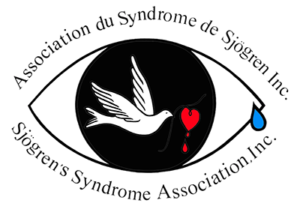Diagnostics
How can we diagnose Sjögren syndrome?
Diagnosis of Sjögren's syndrome is based on a combination of clinical symptoms, blood markers, and disease-specific tests. Specifically, autoantibodies such as anti-SSA, anti-SSB and anti-Ro52 can be blood markers of Sjögren syndrome. Salivary gland dysfunction can be confirmed by objective tests carried out by an oral medicine specialist by measuring the quantity of saliva produced. Likewise, the presence of dry eyes can be objectified by an ophthalmologist, using the Schirmer test (which consists of measuring the quantity of tears produced in the space of five minutes) and tests aimed at identifying damage to the eye. the surface of the eye caused by the deficiency of tears. A biopsy of the salivary glands in the lip can also be done to confirm the diagnosis. (Source: Dr. Shen, rheumatologist - 2028-05-28)
Some of the tests your doctor will conduct before making a diagnosis of Sjögren’s syndrome are outlined below:
Blood Tests
Blood tests are used to detect antibodies associated with primary Sjögren’s syndrome such as: Rheumatoid Factor (RF), Anti-nuclear Antibodies (ANA), Sjögren’s Syndrome-associated antigens A and B (SSA and SSB) also known as (anti-RO and anti-LA) and anti-Ro52.
Tests To Assess Dry Eyes
Today, there are many techniques used to diagnose dry eyes. Your physician may use one, or all these methods.
- The Slit Lamp exam gives an indication of the volume of the tears by magnifying the eye and viewing it in its resting state.
The Lissamine Green or Rose Bengal may be used to determine any degenerated cells or breakdowns in the tear film. - The quantity of ones tears is tested. Using a Colour Bar Schirmer Test, the tip of a treated, calibrated strip of paper is placed in the lower lid of your eye to measure the amount of tears produced during a five-minute period.
- If the patient has particularly dry eyes sometimes the doctor will use a method that involves temporarily closing the tear duct (punctual) canal. A small collagen plug is inserted into the tear duct until it completely disappears just below the opening, thus acting like a stopper in a sink. This will prevent tear drainage, causing ones own tears to bathe the eye for a longer period of time. In about a week, this plug will dissolve and wash away with the tears. Patient and doctor may then evaluate if permanent closure may be required.
Tests To Assess Dry Mouth
The most common test is a lip biopsy which will show if there is inflammation of the salivary glands. Your doctor might also choose to do other tests.
- Lip Biopsy: An incision of approximately 2 cm on the surface of the lower lip and excision of some minor salivary glands for microscopic examination and analysis.
- Sialography: An x-ray examination of the salivary duct system after radiologically sensitive dye has been injected into it.
- Salivary Scintigraphy: This test measures salivary gland function by injecting radioactive material into the salivary glands.
- Magnetic Resonance and Ultrasound examination of the Parotid gland.
The signs and symptoms of Sjögren’s appear gradually and often go unrecognized for years. Symptoms also may mimic other conditions such as lupus, multiple sclerosis or rheumatoid arthritis.
If you suspect you may have Sjögren’s, see your doctor. He or she will conduct a thorough history and physical examination, and may refer you to a rheumatologist. Diagnosis must be made carefully to distinguish between symptoms associated with Sjögren’s and various other potential causes of dryness in the mouth and eyes such as radiation or medication (there are about 400 drugs that can cause dry mouth and eyes).
